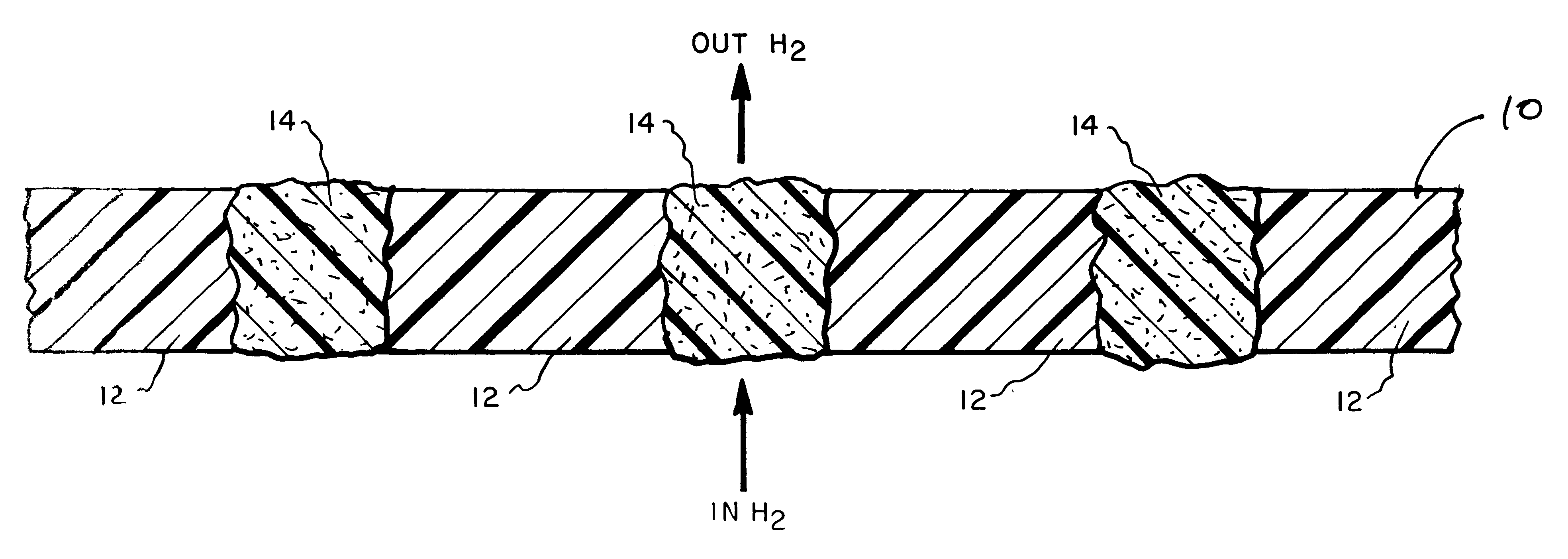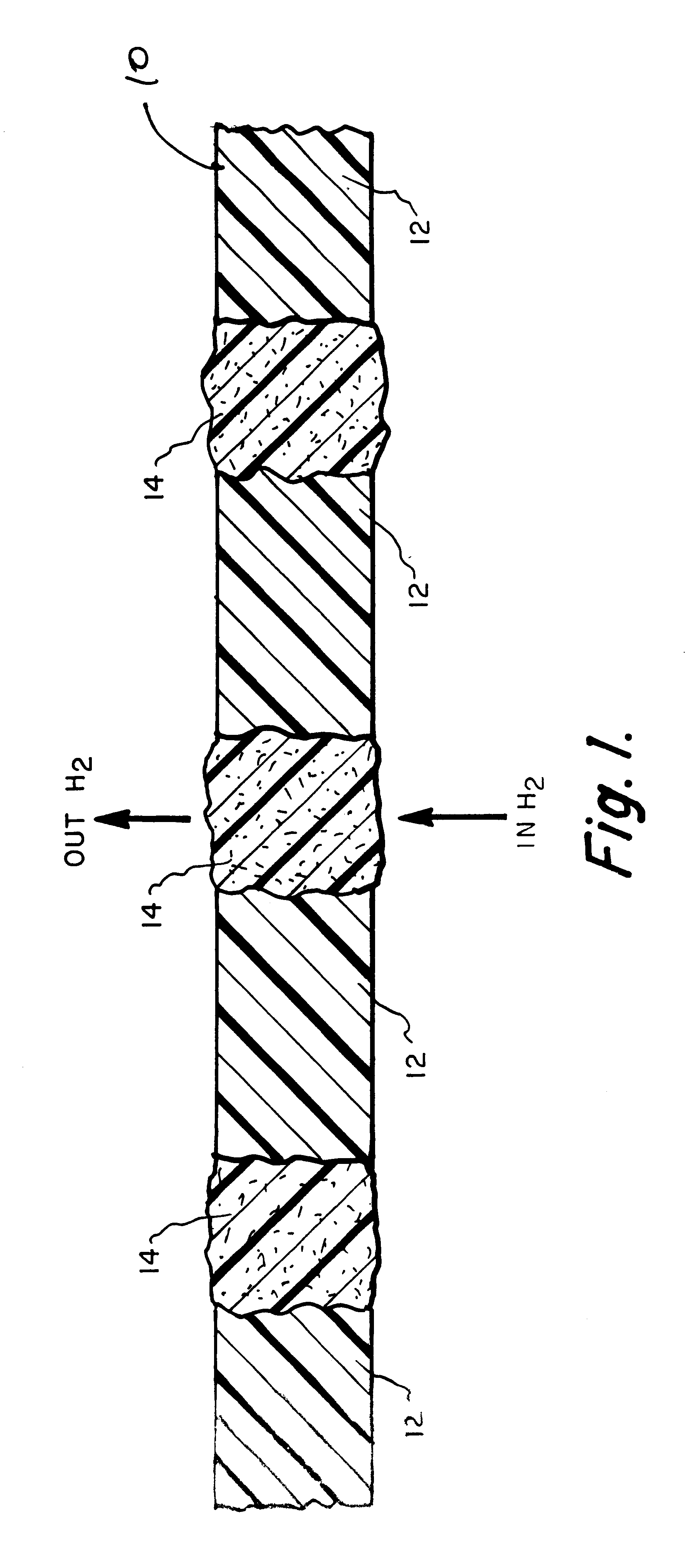Recombinant separator
a recombinant separator and separator technology, applied in the direction of cell components, cellulosic plastic layered products, separation processes, etc., can solve the problems of inability to achieve high current, the rate of water introduction to the cast mixture cannot be too slow or too fast, and the formation of no gel in a meaningful amount of tim
- Summary
- Abstract
- Description
- Claims
- Application Information
AI Technical Summary
Benefits of technology
Problems solved by technology
Method used
Image
Examples
example 2
20 g of microgranular cellulose (Aldrich C6413) is dissolved in 22 kg of 5% LiCl / DMAC and heated to 130 degrees Celsius for 1 hour. The solution is cooled and then mixed with 5% by weight EC in DMAC in a 60 / 40 weight ratio cellulose / EC. 45 g of solution is cast and gelled with a humidifier over the glass tray. A thermohygrometer close to the tray registered 20 degrees Celsius and 65% relative humidity. After 1 hour, a cohesive gel forms, which is then rinsed to yield a solvent and salt-free gel. The gel is dried under vacuum to yield a separator that is 75 microns in thickness.
example 3
20 g. cellulose of powder form (International Filler Corporation) of degree of polymerization 1200 is dissolved in 2 kg of 3% LiCl / DMAC. Cellulose is crosslinked by reacting with NaOH and 1,6 diiodohexane. The resulting cellulose solution is mixed with 4% polyphenyl oxide in DMAC and both solutions are heated to 70 degrees Celsius and then cooled. Solutions are cast onto a conveyor belt and allowed to gel on the conveyor belt. Gel is moved to a different section where it is washed and rinsed along another belt and then taken to a drying drum.
example 4
The procedure of example was repeated except washing was performed with 50% methanol, 50% water.
PUM
| Property | Measurement | Unit |
|---|---|---|
| thickness | aaaaa | aaaaa |
| temperature | aaaaa | aaaaa |
| thickness | aaaaa | aaaaa |
Abstract
Description
Claims
Application Information
 Login to View More
Login to View More - R&D
- Intellectual Property
- Life Sciences
- Materials
- Tech Scout
- Unparalleled Data Quality
- Higher Quality Content
- 60% Fewer Hallucinations
Browse by: Latest US Patents, China's latest patents, Technical Efficacy Thesaurus, Application Domain, Technology Topic, Popular Technical Reports.
© 2025 PatSnap. All rights reserved.Legal|Privacy policy|Modern Slavery Act Transparency Statement|Sitemap|About US| Contact US: help@patsnap.com



